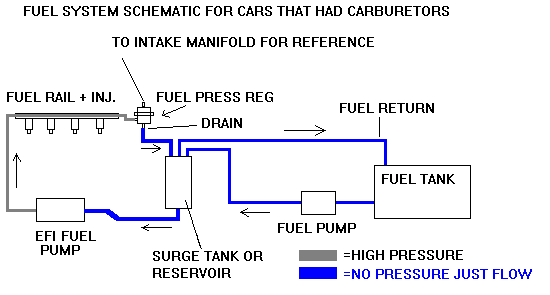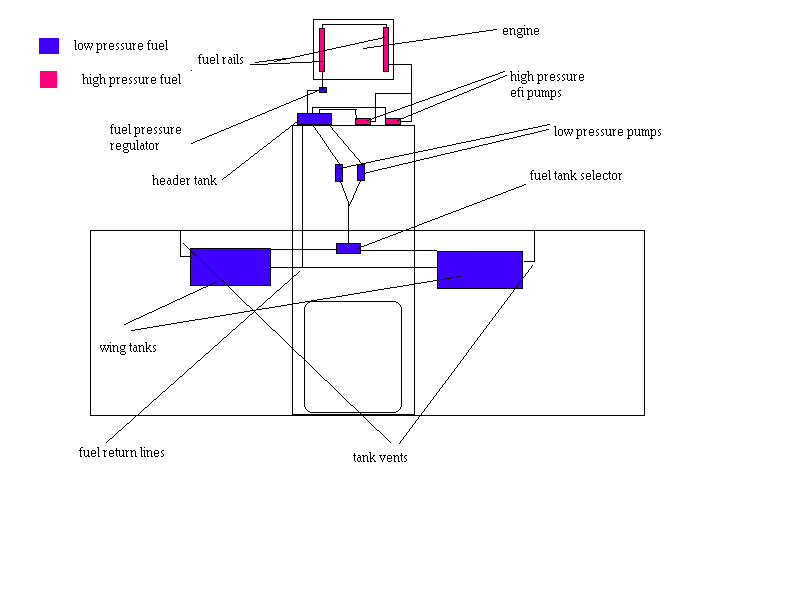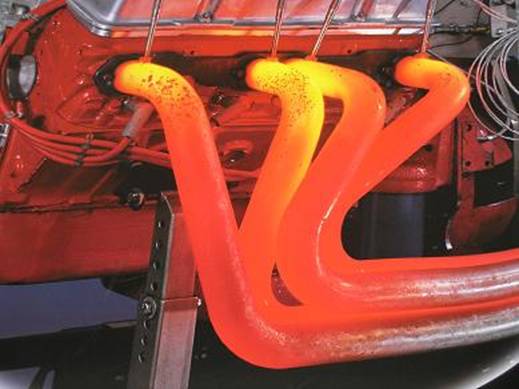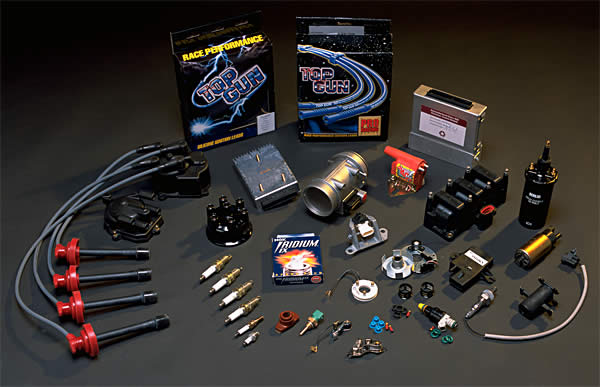Proper fuel system design is very important to ensure trouble free performance when installing an EFI engine into an aircraft. Many people fail to consider certain aspects when designing or modifying their system for use with EFI. Fuel system malfunction and fuel starvation are among the leading causes of homebuilt aircraft crashes.
System Basics
It is important to familiarize yourself with the basic EFI mechanical components and function to be able to understand why certain things need to be a certain way. All EFI systems use a high pressure pump to supply fuel to the injectors. This is almost always electrically driven. Most systems run between 35 and 45 psi. Fuel is supplied to fuel rails or a fuel block which is connected to the injectors. The other end of the fuel rail or block is connected to a fuel pressure regulator. Its function is to hold the fuel pressure at a constant differential above the intake manifold pressure. It does this by returning unused fuel back to the fuel tank. The pump always puts out a constant volume of fuel and more than the engine requires at full throttle so most of the fuel is returned back to the tank under idle and low power conditions. Below is a proven fuel system used in racing cars which undergo high G forces. The system for aircraft is a variation of this and has also been flight proven in our RV6A and others.
It is important to familiarize yourself with the basic EFI mechanical components and function to be able to understand why certain things need to be a certain way. All EFI systems use a high pressure pump to supply fuel to the injectors. This is almost always electrically driven. Most systems run between 35 and 45 psi. Fuel is supplied to fuel rails or a fuel block which is connected to the injectors. The other end of the fuel rail or block is connected to a fuel pressure regulator. Its function is to hold the fuel pressure at a constant differential above the intake manifold pressure. It does this by returning unused fuel back to the fuel tank. The pump always puts out a constant volume of fuel and more than the engine requires at full throttle so most of the fuel is returned back to the tank under idle and low power conditions. Below is a proven fuel system used in racing cars which undergo high G forces. The system for aircraft is a variation of this and has also been flight proven in our RV6A and others.

General Concerns in Aircraft
An EFI fuel system must be designed to supply fuel to the injectors under all anticipated flight conditions. EFI engines do not tolerate getting air into their fuel systems. Unlike a carb which has a float bowl to dissipate air bubbles, if air is present on the high pressure side of the pump, air will be injected along with the fuel. This will lead to a lean condition until the air is purged. It should also be noted that most EFI pumps do not process air very well due to their design nor do they reprime well if there is much head involved. In short, a constant, air free fuel supply must be available at the inlet of the high pressure pump.
 |
Fuel injection:- |
is a system for mixing fuel with air in an internal combustion engine. It has become the primary fuel delivery system used in automotive petrol engines, having almost completely replaced carburetors in the late 1980s.
A fuel injection system is designed and calibrated specifically for the type(s) of fuel it will handle. Most fuel injection systems are for gasoline or diesel applications. With the advent of electronic fuel injection (EFI), the diesel and gasoline hardware has become similar. EFI's programmable firmware has permitted common hardware to be used with different fuels.
Carburetors were the predominant method used to meter fuel on gasoline engines before the widespread use of fuel injection. A variety of injection systems have existed since the earliest usage of the internal combustion engine.
The primary difference between carburetors and fuel injection is that fuel injectionatomizes the fuel by forcibly pumping it through a small nozzle under high pressure, while a carburetor relies on low pressure created by intake air rushing through it to add the fuel to the airstream.





ELECTRIC FULE INJACTION
HOW TO EFI WORK
No comments:
Post a Comment